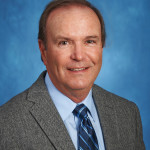![]()

Rural schools are an often overlooked part of the public education system. Sascha Erni/flickr, CC BY
By Karen Eppley, Pennsylvania State University
The recent appointment of Betsy DeVos as secretary of education has brought rural schools into the national conversation in ways never seen before. At her confirmation hearing, DeVos said that guns might have a place in schools in order to protect from “potential grizzlies” in places like Wapiti, Wyoming.
While the comments about grizzly bears and guns were well-publicized, there was considerably less talk about how DeVos’ pro-charter school agenda could play out in rural communities like Wapiti.
As a rural education researcher and a lifelong rural resident, I can attest that rural communities and schools are distinct places of teaching and learning.
Though not often at the center of the national conversation, 33 percent of all U.S. public schools – including Wapiti Elementary – are classified as rural. Data from the National Center for Education Statistics (NCES) and the U.S. Census Bureau indicate that rural schools enroll a total of 9.7 million children. A quarter-million of them attend charter schools.
Under DeVos’ leadership, this number is expected to grow with increased federal support. Although few in number as compared to urban charter schools, charter schools in rural communities are distinct because of the conditions under which they are opened and operated. Like most rural schools, rural charter schools are closely connected to their rural communities.
Importance of schools to rural communities
Thirty-two thousand rural schools serve every region of the United States. These schools are the “heart” of their communities – socially and economically – and are deeply important to their collective identity.
Schools in rural areas not only help to maintain the social fabric of rural communities, but also offer services that reduce the effects of poverty. These include health services, continuing education classes and community literacy programs. Social and economic investment in rural schools is critical for small rural communities that have been affected by an increasingly global economy.
Despite the positive impacts of schools on rural communities, 150,000 rural schools have been eliminated through closure or consolidation since 1930. Rural schools are closed primarily in response to budget cuts and low enrollment.
The story of the closure of the Wellington School is typical. Wellington was located in the potato farming community of Monticello, Maine. The school enrolled 66 children and played a critical role in the community. Residents fended off closure for over 30 years, but the school closed in 2014.
As was the case in Monticello, rural school closures and consolidations almost always face community resistance. In cases where resistance fails, community members sometimes open a charter school in place of the existing school. This is often not because community members are dissatisfied with the traditional school, but because they simply want to maintain a school in the community.
When the residents of Elkton, Oregon were faced with the closure of their school, residents opted to open a charter school in its place. Elkton School District is one of 12 rural single-school districts in Oregon that have converted to charter schools in the face of closure or consolidation. Before becoming a charter schoool in 2009, Elkton enrolled 130 students in grades K-12. Elkton now enrolls 240 students and is no longer at risk for closure.

Transportation is one of the many difficulties facing low-enrollment rural schools. Mark Goebel/flickr, CC BY
Charter schools
Charter schools are an educational experiment of publicly funded, tuition-free schools that operate with few restraints on issues such as teacher qualifications, curriculum and financial transparency. Charter schools are funded through the transfer of money from students’ district of residence (“home” district) to the charter school.
According to the National Conference of State Legislators, local school districts approve the applications for or “authorize” about 90 percent of charter schools. Universities, state boards of education, independent charter boards and municipal governments can also authorize charters.
Since the first charter school law was passed in Minnesota in 1991, the U.S. has adopted increasingly charter-friendly policies. This began with the Public Charter Schools Program (PCSP) in 1995, and expanded with the passage of No Child Left Behind in 2001. In 2015, the Every Child Succeeds Act (ESSA) further increased funding for charter schools – despite emerging research suggesting that charter schools may have lower academic performance and negatively affect the finances of the home district.
The increasingly charter-friendly environment can be traced to an ideological shift: While public education was once seen as a key to democracy, it is increasingly seen as a tool of efficiency and economic competitiveness. This change has created prime conditions for the school choice movement – and for the creation and expansion of charter schools.
And charter schools are growing. There are four times as many charter schools as there were in 1999. Forty-three states and the District of Columbia have laws allowing charter schools.
DeVos’ appointment signals a continued interest on the part of the federal government in the growth of charter schools. The Washington Post called DeVos a “one-issue nominee” for her singular focus on school choice. In DeVos’ state of Michigan, 12 percent of charter schools are rural. Nationwide, 16 percent of charter schools are rural. Still, rural charter schools have been mostly absent from the national conversation.

President Donald Trump and Secretary of Education Betsy DeVos are known advocates of school choice and charter schools. Evan Vucci/AP Photo
Why rural charter schools
A key difference between rural charter schools and urban charter schools lies in how the schools come to be and who is in charge of their day-to-day operations.
Professional management groups (KIPP, Mastery, Propel Schools, Scholar Academies, etc.) are far more likely to manage urban charter schools. Ninety-three percent of New Orleans charter schools and 44 percent of New York City charter schools, for example, are managed professionally. In contrast, just 7 percent of rural charter schools are professionally managed. Ninety-three percent are initiated and operated by local community groups.
That rural charter schools often begin as a response to closure and consolidation explains, in part, the disparity between how urban and rural charter schools are managed. Rural community members open charter schools as a means of keeping a school in their community, and 93 percent of the time, assume the management and operation of the new school themselves. They do so because they feel that the charter is a better choice for their students than the newly consolidated school. What counts as “better” is unique to each situation and community.
Community members may open a rural charter school as a means of sustaining and growing the connections between a school and its community. Likewise, the community may want a charter school that places the rural community at the center of its work. In some cases, a charter school is opened with an explicit emphasis on addressing local need – such as the maintenance of children’s native language. In general, rural charter schools reject the idea that the purpose of schooling ought to be to help students to “learn to leave” their rural community. Rural charters are often opened with the express purpose of keeping children in the community for school.
By establishing a charter school, rural community members, often for the first time in recent history, can have a voice in the education of their children. Parental control is, in fact, the basis of arguments for school choice and charter schools.
Advocates claim that parental control will result in more competitive and efficient schooling. But parental control in the case of rural charters can have a distinctly different meaning. Rural community charter schools are often opened to serve local needs. They are not in competition with other schools (none are nearby) and their small size and emphasis on maintaining community traditions make them distinctly inefficient.
In each instance, the opening of a rural charter school happens in a complex web of educational policy, economic disparities and a long-established cultural disdain of rural people. Until educational, social and economic policies are implemented with rural communities in mind, rural citizens should continue to work to break down barriers for more socially just rural schools and communities – in the same way that urban citizens have.
Rural charter schools can be a mechanism for that work. They are a means for rural communities to talk back to messages and policies suggesting that small rural schools are inefficient, culturally irrelevant and too small to be politically significant.
Karen Eppley, Associate Professor of Curriculum and Instruction, Pennsylvania State University. This article was originally published on The Conversation. Read the original article.






